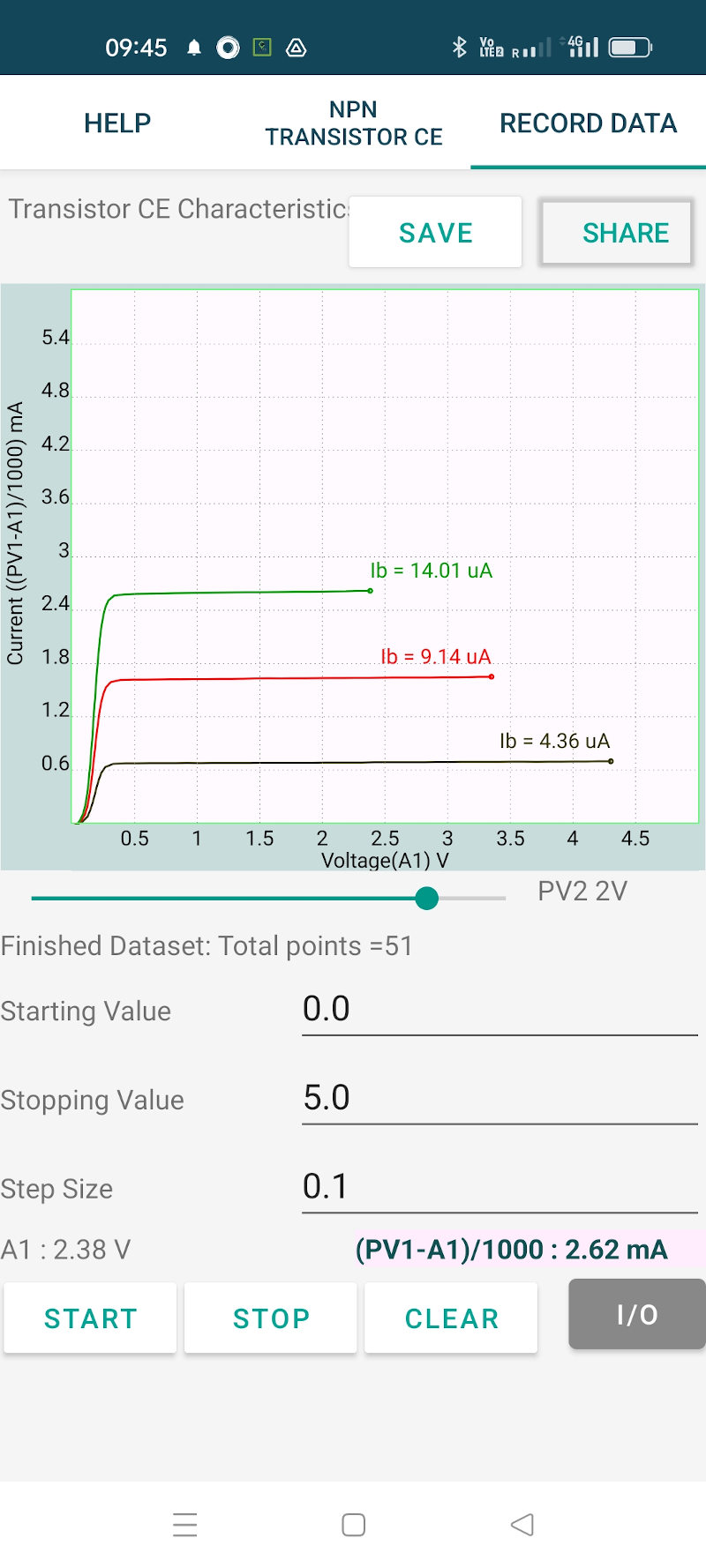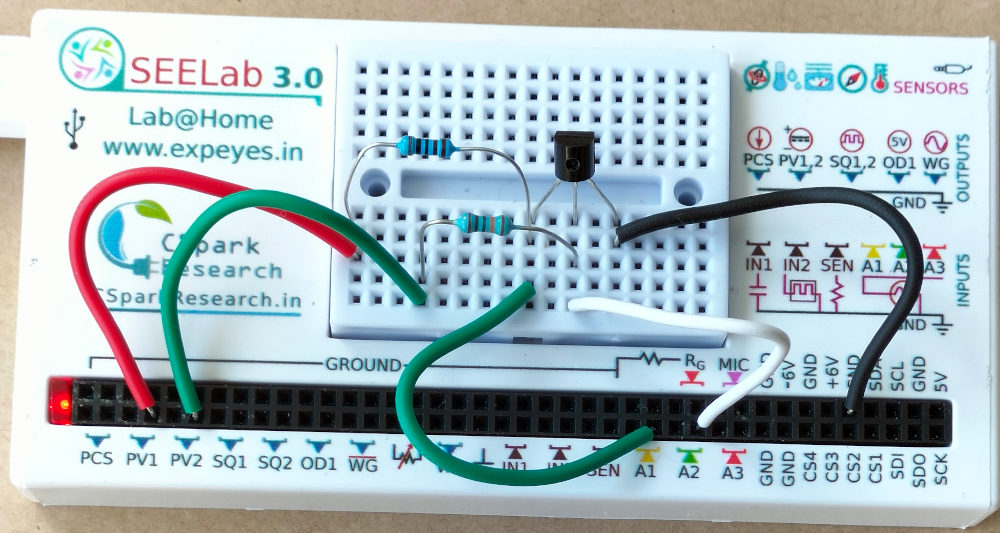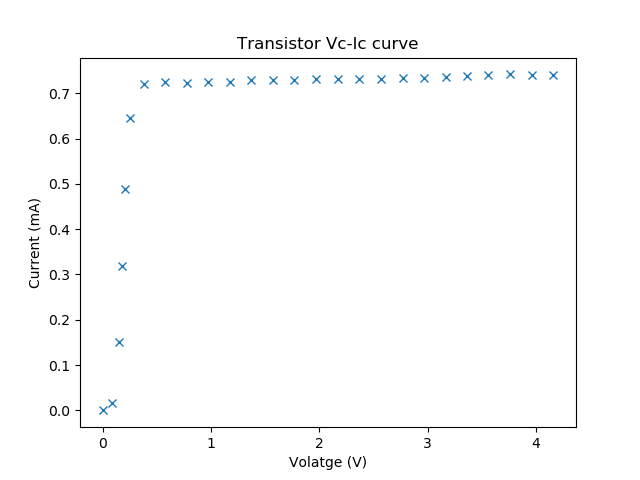
The base current is set by the voltage from PV2, through a 100k resistor. The base voltage is measured to calculate the base current from Ib = (PV2-A2)/100K. The collector voltage is monitored by A1. The collector is connected to PV1, through a 1k resistor. For a selected base current, the voltage at PV1 is incremented in steps and at each step the collector voltage is measured. Corresponding collector current is calculated from i = (PV1-A1)/R. The transistor used is 2N2222, having a current gain of around 200. The schematic and photograph of the experimental setup and the results are shown below.


Steps to perform this experiment manually are:
The code given below may be edited to generate data for different base currents.
The slope of the graph in the active region (nearly horzontal) gives the output impedance.

Program to plot Ib vs Ic and find the gain by fitting the data